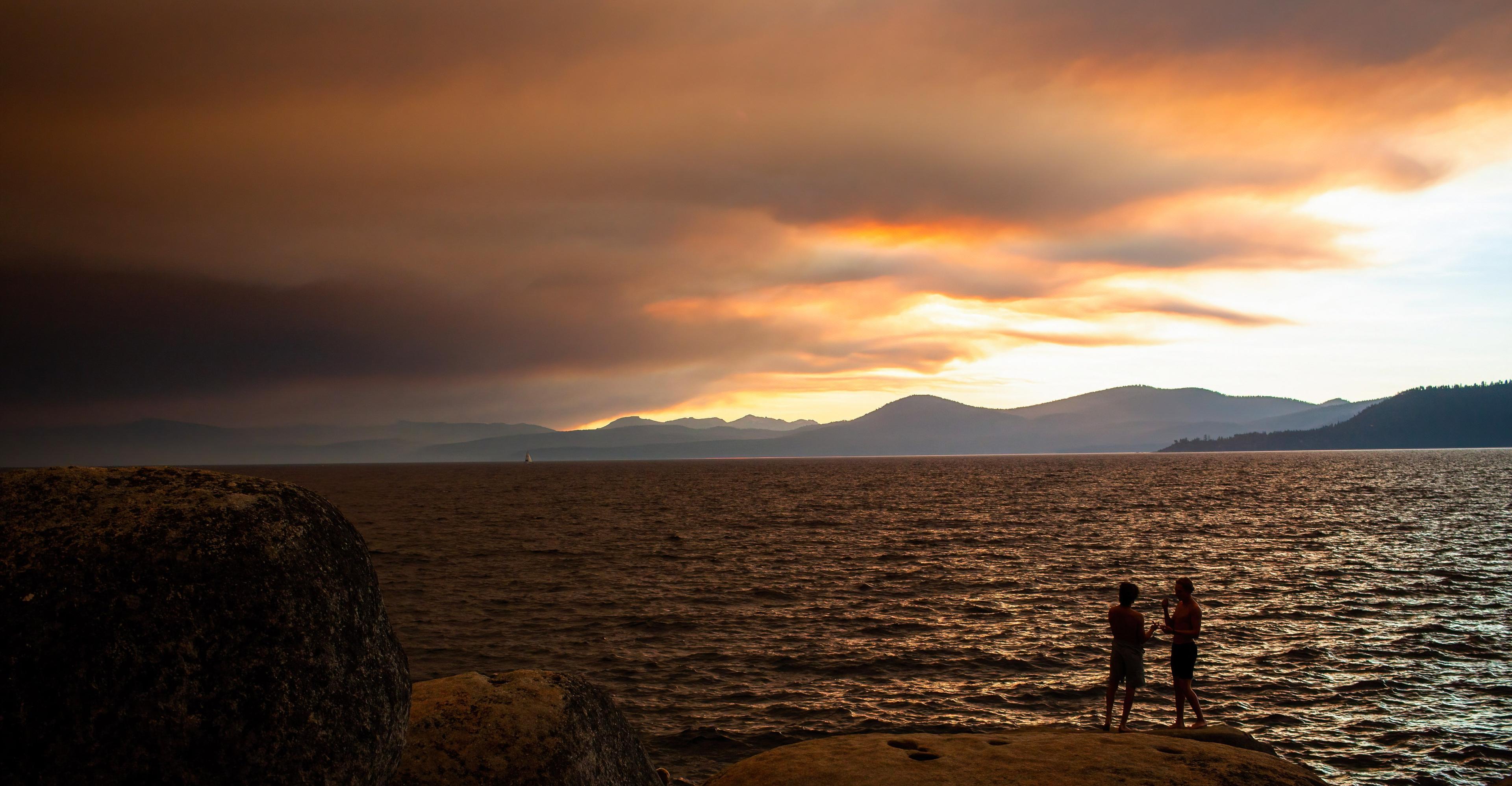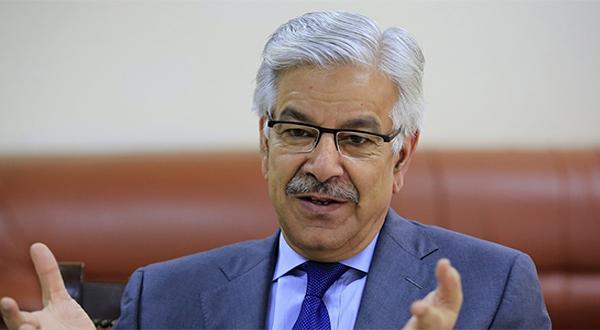Some types of air pollution slow global warming — but at the cost of millions of deaths a year.


“The smoke is very thick, like a dark mushroom in the sky,” said reporter Gus Abelgas in a 1991 television broadcast on the ongoing volcanic eruption of Mount Pinatubo in the Philippines. “It’s just like what we saw in Hiroshima.”
After 500 years of dormancy, Mount Pinatubo’s June explosion represented one of the largest volcanic events of the 20th century. The eruption forced approximately 30,000 indigenous Aeta people to evacuate the nearby area and killed over 200 people. (An additional 426 people died in the three months following the explosion due to poor conditions in the evacuation zones.)
The eruption also sent a sulfuric gas cloud into the atmosphere 28 miles high — or five Mount Everests stacked on top of each other. While almost a foot of muddy ash covered the surrounding area, the sulfuric gas mixed with water vapor in the air, creating a layer of a reflective acidic compound that cooled the Earth for two years.
Yes, that’s right: A hot volcanic eruption made the planet cooler.
Sulfur dioxide is one of many aerosol particles that reflects the sun’s light and can act to make temperatures globally cooler than they would be otherwise. Mount Pinatubo’s eruption temporarily dropped global temps by about 0.9 degrees Fahrenheit. That doesn’t sound like a huge jump, but if you were to warm the planet by an additional 0.9 degrees Fahrenheit today, that could trigger increased flooding and fire events, sweeping heat waves, super storms, and even famines.
Collectively, volcanoes around the globe emit 20 to 25 million tons of the cooling aerosol sulfur dioxide annually, but in 1991, Mount Pinatubo alone released 15 million tons of the compound. And while extreme, Mount Pinatubo’s cooling effect is not an anomaly — nor are volcanoes the only sources.
Air-polluting sources — such as volcanic eruptions, wildfires, and industrial factories — all emit particles that reflect light and cool the planet. To be absolutely clear: This is not at all to say that air pollution is a good thing. Air pollution, after all, contributes to 7 million premature deaths per year globally. Improving air quality should be a top goal across the planet.
“Many of those same human activities [that contribute to climate change] can increase air pollution in the form of particles, and those particles are both detrimental to health and counteract, to some extent, the warming that comes from greenhouse gasses,” said Jason West, a professor in environmental sciences and engineering at the University of North Carolina at Chapel Hill.
But in the absence of cooling aerosols, we might have nearly 1 degree Fahrenheit more warming, experts say. Given the world is on track to record its hottest summer on record, this is bad news. While the positive effects of temperature-cooling pollution do not outweigh air pollution sources’ greenhouse gas emissions or the overall cost of these pollutants to human health, they have acted to somewhat slow the rate of warming. As we reduce air pollution — which we must do — we need to be prepared for the short-term consequences of even faster global warming.
The relationship between climate change and air pollution
Greenhouse gas emissions — such as carbon dioxide, methane, and nitrous oxide — warm the planet by absorbing light and therefore trapping heat. Electricity production (which has soared over the last few decades) and vehicles are some of the largest producers of these gasses.
Some aerosol particles — such as sulfate aerosols, particulate matter, and sea salt — prevent warming. Heat dances off bright-colored particles and is absorbed by darker particles (like soot and black carbon). Bright, reflective aerosol particles affect Earth’s temperature by scattering sunlight in the upper part of the atmosphere, the stratosphere. They also create and brighten clouds (which then also reflect light away from the Earth’s surface) by attracting water vapor that attaches and sometimes freezes on the particles. The conglomeration of water vapor prompts the formation and thickening of clouds.
Natural sources, such as volcanoes, sea spray, and desert storms, can shoot these particles into the atmosphere. Human-made sources, like the burning of coal, also emit aerosols. Vehicles and power plants emit sulfate and nitrate particles.
While greenhouse gas emissions can persist in the atmosphere for decades or even centuries, cooling aerosol particles live in the atmosphere for only days or weeks due to their composition and climate conditions. Particle size and temperature influence these emissions’ atmospheric lifespan. As Mount Pinatubo demonstrated, the effect of cooling aerosol particles is temporary (in the case of this massive volcanic eruption, the aerosol effect was felt for approximately two years) but they can be very strong. After the far larger eruption of Mount Tambora, 1816 became known as “the year without a summer,” as temperatures dropped by as much as 7 degrees Fahrenheit around the world, crops failed, and tens of thousands of people died from hunger.
In 2018, researchers from the Center for International Climate and Environmental Research, NASA, the University of Leeds, the University of Oxford, and Climate Analytics found that ending the emission of greenhouse gasses will also end human-caused aerosol emissions. The absence of these aerosols will result in global heating and increased rain, especially in locations where aerosol emissions were once regularly emitted. The world must prepare for a temporary spike in warmth in order to address the even more dangerous long-term effects of climate change and air pollution.
If human-caused air pollution disappeared this instant, the world would experience the negative warming consequences of past greenhouse emissions for decades to come, with virtually no lingering cooling effect from the previously emitted particles, said West.
“Let’s say we emitted greenhouse gases, CO2, and [aerosol cooling] particles at the same rate forever. Eventually, the greenhouse gases are going to win because they’re going to continue to accumulate,” he said. “Whereas the particle concentration would stay the same because it’s short-lived.” Ultimately, aerosol particles have masked some of greenhouse gasses’ effects, but they won’t do so forever.
Why we need cleaner air
Despite evidence that keeping cooling aerosol particles from polluting sources would prevent some level of global warming, doing so is not an option. One, because they share a source with greenhouse gasses, and two, because they are unequivocally detrimental to human health.
Air Quality Index (AQI) levels are used to measure the level of air pollution and range between 0 to 500. Even at relatively moderate levels (101-150 AQI), air pollution causes eye and throat irritation. But, as the intensity and length of exposure increase, so do the consequences.
PM2.5, a type of fine-particle pollutant, is one of the most harmful air pollutants to human health currently regulated by the Environmental Protection Agency, and exposure to high levels can cause heart attacks, strokes, and severe respiratory problems, and even initiate the onset of chronic conditions such as bronchitis and asthma. The effects are particularly dangerous for those suffering from preexisting lung and heart conditions like obstructive pulmonary disease.
“All the things we know that cigarette smoking can cause, like cardiovascular disease and lung cancer, likewise, fine particles do that,” said Patrick Kinney, a professor of urban health for Boston University’s School of Public Health. “Of course, we don’t breathe as much [fine particles] as a cigarette smoker does ... but it’s the same kind of effect.”
Infants and children are particularly susceptible to developing cancers and cognitive impairments due to air pollution. Low- and middle-income countries, primarily in Asia and Africa, account for more than 90 percent of these deaths.
“When we look over the planet, aerosols can have a different influence,” said West. “We expect aerosols to have a bigger effect in the Northern Hemisphere — where most of the pollution sources are — compared to the Southern Hemisphere, which is relatively more pristine. It’s covered by ocean and there’s much less population.” Two-thirds of the African continent and most of Asia lie in the Northern Hemisphere.
Vehicle exhaust and coal combustion contribute to particularly severe air pollution in densely populated areas within Asia. China and India, the two most populous countries in the world, emit over half of the world’s PM2.5 emissions, and in both countries, air pollution contributes to the deaths of more than 2 million people a year.
“We need to switch away from fossil fuels toward renewables,” said West, “which has benefits for both air pollution and for the climate.”
What will happen to global temperatures?
If humans keep burning fossil fuels, air pollution will worsen, and so will climate change. Consequently, a warmer planet will make our air quality worse. Hot weather creates the perfect conditions for the reactions that produce ozone (a greenhouse gas). And heat waves can cause droughts. During a drought, forest fires, which produce particle pollution, are more common. “Air pollution affects climate change and climate change affects air pollution,” said Kinney.
But air pollution is not the only — or most important — byproduct of climate change, he added. Global warming will bring a host of other problems, including extreme heat waves, hurricanes, wildfires, and the proliferation of infectious diseases.
“This is not new. We’ve had storms always and we’ve had heat waves always,” said Kinney. “But what climate change is doing is making those extremes more extreme, and pushing the sort of upper tail of the extreme distribution for temperature and also for storm intensity.”
Across the world, natural disasters, including extreme winter storms, wildfires, and flooding, are wreaking havoc on communities that previously never faced such events. “It’s worse than a new normal. I call it a new abnormal,” Michael Mann, a climate scientist at the University of Pennsylvania, previously told Vox.
Preventing further climate change is, therefore, the greatest concern, and given greenhouse gases and aerosol cooling particles often stem from the same sources, it’s very difficult to isolate the emissions.
“There are some particles that are warming, such as black carbon particles. They have a warming influence, as well as being bad for health,” said West. “So if we can target black carbon-related emissions, then we could have a benefit for both problems — for both air pollution and health, and for climate. But ... many sources are sources of both black carbon and cooling aerosols.”
Even if the warming and cooling pollutants had different sources, the health outcomes from aerosol particles — heart attacks, strokes, chronic diseases — mean keeping them around isn’t a viable option.
Thus, scientists and researchers are now looking for ways to mimic the cooling aerosol effect without the same negative impact through a practice known as geoengineering. This field encompasses methods meant to offset the impacts of climate change by influencing the environment.
One geoengineering method involves injecting salt particles into the air to brighten and increase cloud coverage over the ocean. Despite research dating back to 2012 showing that salt particles cannot slow climate change at a meaningful rate, researchers continue to explore the idea.
A number of other ideas have been proposed and tested, including producing artificial clouds and placing mirrors in space. Producing clouds would entail shooting sulfur dioxide (the same stuff Mount Pinatubo spat out) into the atmosphere, but initial studies of the practice showed that starting and then stopping the method could lead to dire unknown effects. The consequences of space mirrors seem less deadly but are also less understood, and embarking on such a program would cost trillions of dollars. All of these approaches are also politically contentious.
While none of these methods is ready for wide-scale use, interest in geoengineering is rising. In late June, the Biden administration released a report indicating the White House is open to geoengineering research aimed at cooling the planet, specifically the “scientific and societal implications of solar radiation modification.” No concrete plans or policies in this field have yet been made, indicating a level of necessary caution given concerns about geoengineering’s little-understood ramifications.
Altering the delicate balance of the Earth’s climate system through intentional intervention carries inherent risks, including crop and wildlife die-offs and unintended shifts in weather patterns. Some methods could create massive droughts in some parts of the world, or even deplete the ozone layer further.
Another concern is “termination shock.” If geoengineering technology went into effect and was then abruptly ended (by choice or by unpredictable events like terrorist attacks or natural disasters) then the resulting warming would be even more significant and catastrophic than current projections.
Additionally, given that one country’s decision to engage in a geoengineering method could have global repercussions, scientists and policymakers continue to debate the political repercussions and oversight of this technology.
And before any of these ideas can come to fruition, scientists and researchers must develop a better understanding of the true impact of the aerosol cooling effect.
“We know that aerosol particles that come from human emissions have the potential to have a cooling effect on climate,” said Casey Wall, a postdoctoral researcher studying climate science at the University of Oslo. “And we know it can offset some of the warming effects from human greenhouse gas emissions. But the really big debate right now in the climate research community is just how much that aerosol cooling effect offsets the warming from greenhouse gases.”
Air pollution’s relationship with and on climate change is complex, but at the end of the day, cleaner air will lead to a healthier planet. “Air pollution as we commonly talk about it is a bad thing overall, even though it has this effect of cooling the climate,” said Wall. “The effects on human health overall outweigh that.”
Bollywood studio Bhansali Productions to sell future film music to Saregama India
- an hour ago

Chatbots are struggling with suicide hotline numbers
- 15 hours ago

Control’s action-RPG sequel launches in 2026
- 15 hours ago
Bondi gunman’s Indian family had no knowledge of his radicalisation, Indian police say
- an hour ago

Why Republicans in Congress are turning against Trump
- 13 hours ago
Sabalenka named WTA Player of the Year for second straight season
- an hour ago
FIFA hails 5M WC ticket requests amid backlash
- 14 hours ago

The biggest mosquito-borne disease in the world has a cure. There’s just one problem
- 13 hours ago

Gold prices dip per tola in Pakistan, global markets
- an hour ago

Zillow’s short-sighted move to overlook climate risk
- 4 hours ago
Former Punjab CM Manzoor Wattoo passes away at 86
- an hour ago

Disney wants to drag you into the slop
- 15 hours ago




